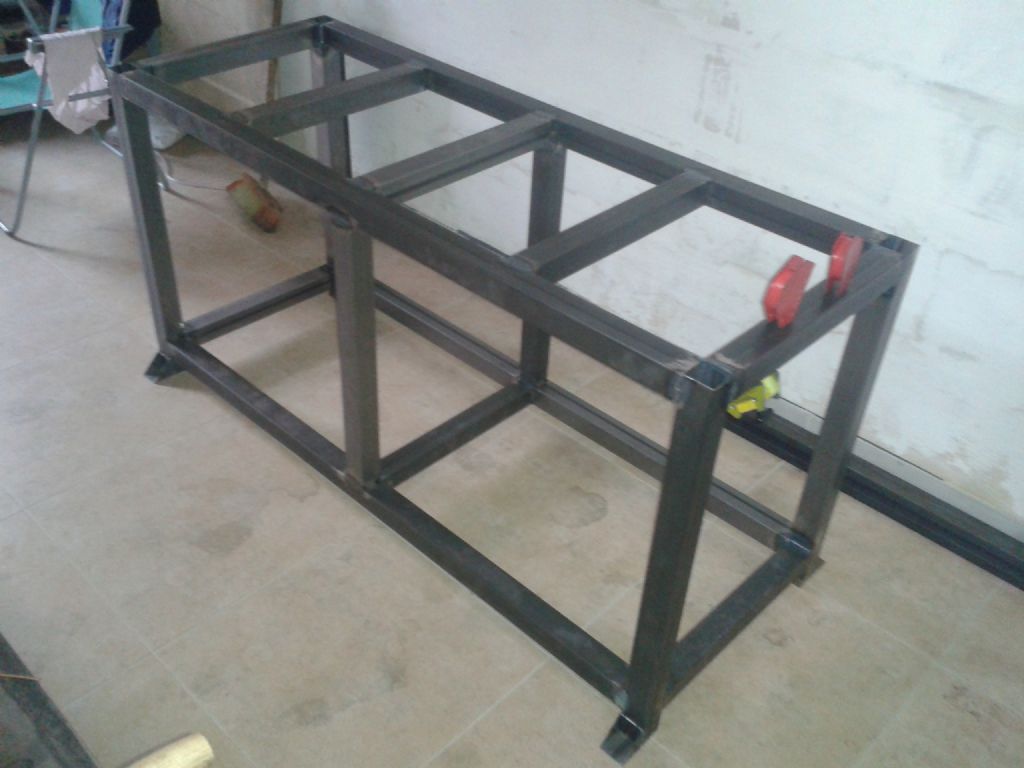Posted by Nick Clarke 3 on 28/06/2022 08:38:25:
… Rail sounds like a bit of overkill to me, but if it is there why not.
I often warn newcomers to avoid scrap metal because of the risk it won't machine well. Railway line is a case in point! The alloy, a Manganese Steel, is formulated and processed to be tough and hard-wearing to high-standards. It's designed to take a few of decades of heavy rail traffic before it has to be replaced. In hobby circles old railway line is often used to make small anvils because it can take a beating! Although I'm sure railway line can be machined, it's going to fight back, likely more trouble than it's worth! The alloy needs flame cutting and grinding, not milling or turning.
From a lathe stand design perspective, railway line provides a girder that's massively too strong and heavy for the job in hand. OK if it's free, but it doesn't mean the rest of the stand can be skimped.
The ideal lathe stand is rigid throughout, which is usually achieved with a box structure in cast-iron or steel, built economically. No girders or other wasted materials! Steel cabinets are usual these days because they're cheaper and stronger than cast-iron and the inside can be used for storage. Small lathes can be supported on suitably braced wooden benches or even kitchen units: the main thing is the structure takes weight straight down to ground, keeps the feet on the same plane, and doesn't move when the lathe is turning.
If I were building a lathe stand from scratch, I'd go for two columns made of flat bottomed steel boxes reinforced at the weight bearing corners. Rigidity improved by binding the columns with sheet metal top and back, to stop movement rather than adding strength. No need for a strong span between columns because the lathe bed does that.
Tempting to provide a heavy flat top to ensure the lathe feet are all at the same level, to take up spring in the columns, and to help soak up vibration. Perhaps a slab of granite kitchen worktop, or a recycled headstone. (Plenty of them lying about!) Not worth the extra trouble here because I run a hobby lathe for ordinary workshop purposes; even with the best stand in the world, my machine can't provide tool-room accuracy unless I do a lot of work to improve it from end-to-end. As I don't need more accuracy, it's not going to happen!
As always what's done in workshops is often compromise rather than perfection. Many members put their machines on castors, which are bad for rigidity, even if jack feet are provided as well. But castors provide mobility, which is often very important. And if a lathe mounted on castors cuts 'well enough', and owners rarely complain, then there's no point in pursuing a theoretically better stand.
Dave
SillyOldDuffer.


![20170904_134629[1].jpg 20170904_134629[1].jpg](/wp-content/uploads/sites/4/images/member_albums/164107/762951.jpg)





